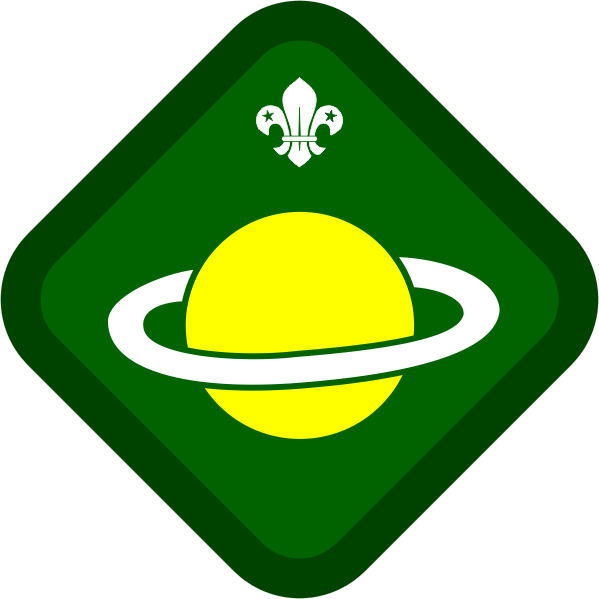
Complete the requirements below:
- Demonstrate an understanding of the night sky and why the pattern of stars changes night by night throughout the year. Know the meaning of the terms celestial equator and poles; circumpolar; and zodiac.
- Recognise the main constellations and know the names of some of their important stars.
- Know the meaning of four of the astronomical terms below and where to find examples of:
- An open star cluster (Pleiades, Hyades, Praesepe, Double Cluster in Perseus)
- A globular cluster (Hercules)
- A double star (Mizar and Alcor, Albireo, Epsilon Lyrae)
- Another galaxy (Andromeda)
- A nebula (Orion)
- A red giant (Betelgeuse)
- Give a general description of the Sun, individual planets, moons, comets and meteor showers, asteroids and meteorites. Know that the Solar System is part of the Milky Way galaxy.
- Know about man’s activities in space, to include SOHO, Hubble, Cassini, and the International Space Station.
- Explain how the Moon affects the tides. Be able to advise on the state of the tide by using a tide table.
- Visit a planetarium, observatory or science centre; or explore an aspect of astronomy further using relevant Internet sites.
- Undertake a project of your choice for three months to further your understanding of astronomy before meeting again with your assessor to discuss your project. Example projects are:
- Keep a diary of planetary events.
- Record meteor showers and satellites seen while observing the night sky.
- Keep a log of Moon halos and phases of the Moon.
- Collect newspaper or magazine cuttings or website pages reporting on space missions across the world.
- Maintain a general interest in astronomy and then meet again with your assessor to discuss your experience.
